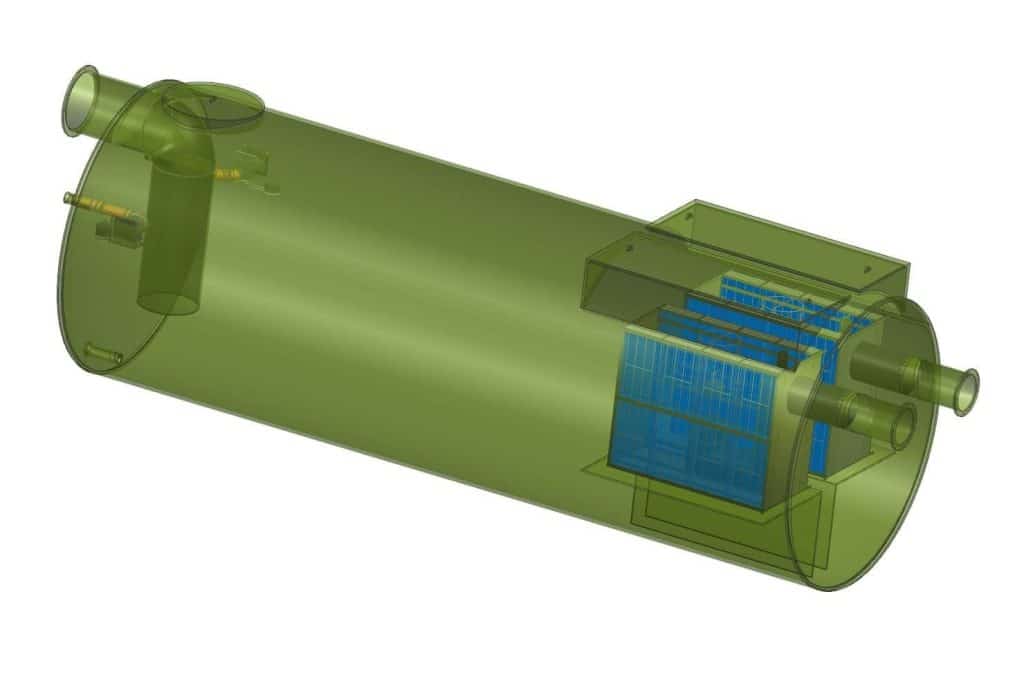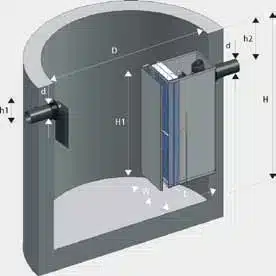Do you know about the hidden protectors of Illinois’ waterways? Illinois Below Ground Oil Water Separators are key to keeping our environment safe. They work hard under the ground, making sure companies follow strict EPA rules and keep the water clean.
In Illinois, underground oil/water separators are a must for industries with oil-contaminated wastewater. They take out oil, grease, and oily bits from the water before it’s let go. Freytech Inc. has top-notch separators that beat North American standards, with a 5 PPM separation rate.
These subsurface systems in Illinois cater to different industries. Whether it’s car repair shops or big factories, they help businesses follow the rules and protect our water.
Key Takeaways
- Below ground oil water separators are vital for EPA compliance in Illinois
- These systems remove oil, grease, and oily solids from wastewater
- Freytech Inc. offers separators with 5 PPM separation efficiency
- Underground separators are crucial for various industries in Illinois
- Proper installation and maintenance are key to system effectiveness
Understanding Below Ground Oil Water Separators in Illinois
Below ground oil water separators in Illinois are key to managing industrial and commercial waste. They remove harmful substances from drainage systems before they reach waterways. This protects the environment.
Definition and Purpose
Oil water separators use gravity to separate lighter-than-water substances from heavier ones. They are vital for places like vehicle service centers and car washes that produce oily wastewater. These separators help meet Illinois’ oil water separator regulations, preventing pollution.
Importance in Industrial Settings
In industrial areas, these separators are crucial for keeping water systems clean. They manage runoff from various areas like parking lots and service bays. By trapping oils and pollutants, they help businesses follow environmental laws and avoid fines.
Illinois Regulations and Compliance
Illinois has rules for oil water separators based on facility type and vehicle numbers. Proper installation and operation are essential to comply with these laws. Businesses need to understand these codes to make sure their separators work right and legally.
Key Components of Underground Oil Water Separator Systems
Illinois buried oil water separators have key parts that work together to separate oil from water. It’s important to know these components for correct installation in Illinois.
Inlet and Outlet Chambers
The inlet chamber slows down contaminated water, helping it start to separate. The outlet chamber then sends out clean water. These chambers manage the flow, making sure the system works best.
Coalescing Media Packs
These packs have materials that grab onto oil droplets. As water moves through, small oil drops merge into bigger ones. This makes it easier to separate the oil. This tech boosts the efficiency of Illinois buried oil water separators.
Oil Collection Chambers
Oil goes to the top and gathers in collection chambers. These chambers make it easy to remove the oil during maintenance. This is a key part of installing these separators in Illinois.
Sludge Collection Areas
Heavy solids fall to the bottom and go into sludge collection areas. Cleaning these areas regularly keeps the system running well. Keeping these areas clean is key for the long life of underground separators.
Illinois Below Ground Oil Water Separators: Design and Installation
The design of below ground oil water separators in Illinois has strict rules. These systems need careful planning to work well. Important factors include the size, shape, and depth of the system.
It’s key to size the system right based on how much water it will handle and the amount of oil in it. This ensures the system works well.

Illinois underground oil interceptors have to meet certain design standards. They should have a depth-to-width ratio between 0.3 and 0.5. This helps separate oil and water efficiently. Custom-made separators can be designed for specific sites, solving unique problems in different places.
Installing below ground oil water separators in Illinois requires precision. It means placing the unit in the right spot, connecting it correctly, and making sure it’s well-vented. Venting stops pressure from building up and helps prevent the system from not working right. Getting a professional to install it makes sure it follows the rules and works well.
Benefits of Subsurface Oil Water Separator Systems in Illinois
Subsurface oil water separator systems in Illinois bring big benefits for businesses and the environment. They use space wisely and keep properties clean and neat.
Space Efficiency and Aesthetics
These systems go underground, saving valuable space. This hidden setup keeps properties looking professional. It’s perfect for businesses that value a tidy look.
Environmental Protection
These systems protect Illinois’ waterways. They stop oil and other pollutants from getting into rivers and lakes. Some top-notch separators can remove up to 99.9% of oil from water.
Compliance with Local Regulations
Subsurface oil water separators help Illinois businesses follow the law. Keeping them maintained is key. This ensures they work right, protecting the environment and avoiding fines.
These separators are crucial in storm water systems. They process runoff to meet the US EPA’s Clean Water Act standards. With effective oily water treatment, facilities protect the environment and dodge big fines.









